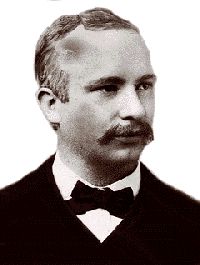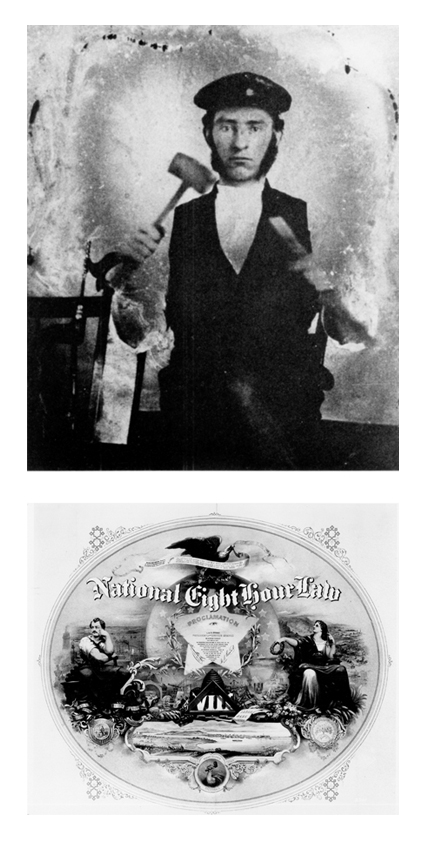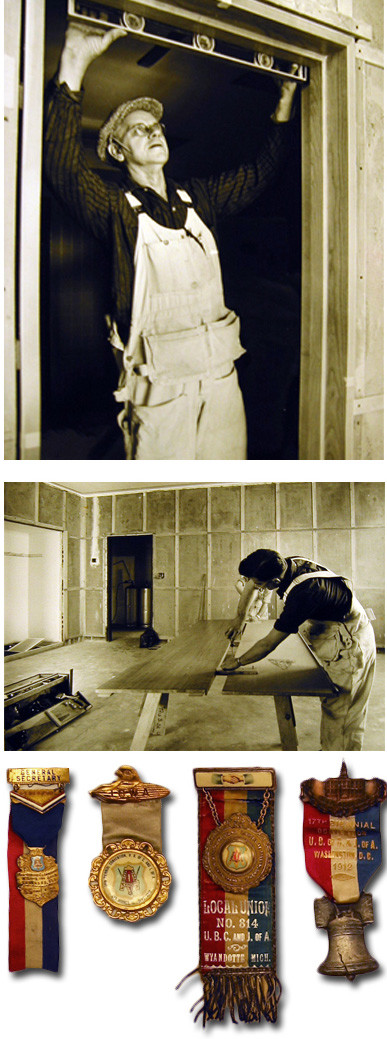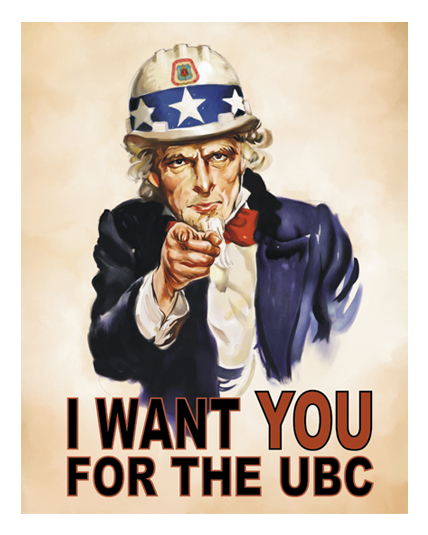While much has changed over the course of more than 140-years, the union today remains as committed as ever to improving the lives of those who make their living in the carpentry trades. For more on the history of the union, watch the ‘History & Heritage’ video (available in both English & Spanish) and read more details below in the stories of trial and triumph that shaped the United Brotherhood of Carpenters into the successful union it is today.
One of the great labor leaders of the 19th century, Peter J. McGuire helped found the UBC. He also served as the union’s first general secretary.
Born to Irish immigrants, McGuire grew up on New York City’s Lower East Side. He left school at 11 to become the family’s breadwinner and later became an apprentice in the Haines Piano Shop. There McGuire was exposed to long hours, low wages, and difficult working conditions—reinforcing the pro-labor views he had absorbed as a sometime student at Cooper Union, a gathering spot for radicals. McGuire went on to lead a successful fight against wage cuts at Haines.
Ultimately harassed out of his position, McGuire began moving from job to job as a journeyman. When work dried up during the 1870s depression, he began to march, speak, and rouse crowds of his fellow unemployed. In August 1881, he organized a Chicago convention, where 36 carpenters from 11 U.S. cities united to form a union for carpenters, and the UBC was born. A few months later, carpenters in Hamilton, Ontario became the first Canadian UBC members, and Toronto Carpenters joined in early 1882.
McGuire spearheaded efforts that led to the eight-hour workday and the founding of the American Federation of Labor. During his UBC tenure, wages more than doubled, and by 1903 the North American UBC had grown to more than 167,000 members. McGuire’s legacy to American and Canadian workers lives on in Labor Day, a holiday he proposed.

The early 1880s brought change to the carpentry trade. The number of large building employers was rising, and contractors were increasingly used to coordinate and supervise construction. It was becoming harder and harder for the average carpenter to become an independent master.
As an experienced organizer, McGuire believed that the trade of the carpenter could only be protected through the collective strength of workers. He spent 18 hours a day speaking, writing, and organizing to keep the union afloat, responding to one crisis after another—in St. Louis, Chicago, Toronto, Philadelphia, and New York. Slowly, the young union grew from 2,042 members in 1881 to 5,789 in 1885.
In 1886, 340,000 workers demonstrated for shorter hours in cities across the U.S.; historians labeled it “the year of the great uprising of labor.” Workers from every industry participated, but building tradesmen were the central force. UBC locals led marches around the country, inspiring others with their determination.
Strikes and demonstrations over hours and wages took place in Canada during this period. In 1887, 700 carpenters and 400 non-union men walked off the job in Toronto over demands for a nine-hour day and a raise from 22.5 to 25 cents per hour.
Not surprisingly, the Brotherhood’s top officer was one of the major North American spokesmen for the strikers. McGuire and UBC General President Gabriel Edmonston even devised a May 1 general strike that paid handsome dividends: Union carpenters won higher wages and better conditions in 53 cities.
Such successes attracted thousands of unorganized carpenters to the union, which swelled to 21,423 members by the summer of 1886. Four years later, membership topped 50,000. McGuire called the UBC “the largest and most powerful organization, numerically, of any special trade in the whole civilized world.”

The 20th century began with an aggressive, nationwide open-shop attack in the U.S. Employers locked out union carpenters in Chicago, New York, Pittsburgh, Louisville, Houston, Milwaukee, and several other cities. Even so, membership in the United Brotherhood of Carpenters reached 200,000 by 1910. A union card became as crucial to a self-respecting carpenter as a complete set of tools. For those who knew the industry, it was a matter of common wisdom that, “the craftsman without a card is a man without a trade.”
The onset of World War I brought a new challenge for unions, however. Wartime needs for temporary military housing, shipbuilding, and ammunition factories pushed the U.S. government into a massive construction-spending program, and President Wilson approved the use of open-shop contractors on federal construction sites.
The unions fought back. On November 7, 1917, 1,300 building trades workers in Eastern Massachusetts participated in a general strike on all military work in the area to protest the use of open-shop builders. The strike, along with pressure from UBC leader William Hutcheson, slowly turned the tide in favor of workers. In April 1918, the federal government guaranteed union shops in areas that had had them before the war, preserving union standards for carpenters.
Peace brought a furious new assault on union labor: the “American Plan,” a building employer scheme of refusing to negotiate with unions. Supported by large industrialists and local chambers of commerce, employers took on construction unions in Detroit, Los Angeles, Milwaukee, Minneapolis, Philadelphia, Salt Lake City, and Seattle.
Contractors in Chicago insisted on a wage cut in January 1921 and locked out workers when unions rejected their demand. In June, all crafts workers except carpenters and painters agreed to submit the dispute to arbitration by a federal judge. The judge slashed wages and weakened long-standing union work rules. The UBC refused to recognize the ruling and led a fight that finally restored union shop conditions in Chicago five years later.
While the American Plan took its toll, the Brotherhood survived the 1920s. The number of union carpenters declined from 400,000 in 1920 to 345,000 in 1928, but wages in the building trades actually rose by roughly 5 percent a year. By the end of the decade, the fury of the anti-union campaigns had subsided. In Canada, the Brotherhood continued to grow with other unions joining and 1913 the UBC was the exclusive union representing carpenters.

Local unions took advantage of the postwar prosperity to expand collective bargaining into new areas. In 1950, for example, the New York District Council of Carpenters negotiated a 3 percent payroll tax to support a Carpenters Welfare Fund. The idea of health and welfare funds became so attractive that the union’s Health and Welfare Committee, appointed in 1954, urged all locals to set up programs. Pension funds soon followed, as well as other contract gains, such as safety measures, travel time, and coffee breaks. The accomplishments of this period brought additional stability to working carpenters and their families.
Unfortunately, the extended boom bred a measure of complacency. With nearly full employment, the union began to focus more narrowly on job referrals and contract negotiations, neglecting such traditional tasks as organizing and educating members.
When the postwar construction boom began to outpace the ability of unions to supply all the necessary labor, nonunion contractors began to gain ground—particularly in suburban and rural homebuilding. While union workers continued to handle 80 percent of all construction projects in the United States as late as 1969, nonunion employers had found a foothold.
In 1969, escalating material costs and labor prices prompted 200 top executives to form the Business Roundtable, which built political support for weakening worker protections and eliminating other union gains. The Roundtable’s efforts, combined with the severe building recession of the mid-1970s and an increasingly anti-labor political climate, encouraged a new open-shop movement.
Nonunion builders, gathered under the umbrella of the Associated Builders and Contractors, were actively involved in this movement. Open-shop or double-breasted firms (companies that use both union and nonunion labor) reduced wages, relaxed safety rules, worsened working conditions, and changed the way work was carried out on job sites.

At the UBC’s 1995 convention, delegates elected Douglas J. McCarron general president of the union. A major theme of McCarron’s first campaign was the need for the union to represent carpenters more effectively in a rapidly changing industry. Since then, McCarron and his leadership team have spearheaded a system that responds nimbly to industry needs and provides members with better access to training and work opportunities. The union’s regional councils are the hubs of member service, representation, organizing, and training.
Major changes at headquarters have launched the union into a new era of member service, professionalism, and industry prominence. In 2001, the UBC opened its new Washington, D.C., headquarters at 101 Constitution Ave., just across from the U.S. Capitol. The UBC also began a new era of training and education at its International Training Center (ITC) in Las Vegas. The facility offers instructor-training and direct member training in scores of UBC craft skills, as well as comprehensive leadership education for members in the building trades.
Much has changed in the more than 140-years since UBC was founded, but the union today continues its unwavering commitment to helping carpenters improve their lives, their futures, and their trade.
